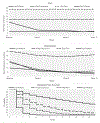Parallel modeling of pain and depression in prediction of relapse during buprenorphine and naloxone treatment: A finite mixture model
- PMID: 32135429
- PMCID: PMC7173998
- DOI: 10.1016/j.drugalcdep.2020.107940
Parallel modeling of pain and depression in prediction of relapse during buprenorphine and naloxone treatment: A finite mixture model
Abstract
Background: Relapse is common in treatment for opioid use disorders (OUDs). Pain and depression often co-occur during OUD treatment, yet little is known about how they influence relapse among patients with a primary diagnosis of prescription opioid use disorder (POUD). Advanced statistical analyses that can simultaneously model these two conditions may lead to targeted clinical interventions.
Method: The objective of this study was to utilize a discrete survival analysis with a growth mixture model to test time to prescription opioid relapse, predicted by parallel growth trajectories of depression and pain, in a clinical sample of patients in buprenorphine/naloxone treatment. The latent class analysis characterized heterogeneity with data collected from the National Institute of Drug Abuse Clinical Trials Network project (CTN-0030).
Results: Results suggested that a 4-class solution was the most parsimonious based on global fit indices and clinical relevance. The 4 classes identified were: 1) low relapse, 2) high depression and moderate pain, 3) high pain, and 4) high relapse. Odds ratios for time-to-first use indicated no statistically significant difference in time to relapse between the high pain and the high depression classes, but all other classes differed significantly.
Conclusion: This is the first longitudinal study to characterize the influence of pain, depression, and relapse in patients receiving buprenorphine and naloxone treatment. These results emphasize the need to monitor the influence of pain and depression during stabilization on buprenorphine and naloxone. Future work may identify appropriate interventions that can be introduced to extend time-to-first prescription opioid use among patients.
Keywords: Buprenorphine and naloxone treatment; Depression; Growth mixture modeling; Opioid substitution treatment; Pain; Prescription opioid use disorder; Survival.
Copyright © 2020 Elsevier B.V. All rights reserved.
Conflict of interest statement
Declaration of Competing Interest The authors report no conflicts of interest.
Figures


References
-
- Beck AT, Steer RA, Carbin MG, 1988. Psychometric properties of the Beck Depression Inventory: Twenty-five years of evaluation. Clin. Psychol. Rev 10.1016/0272-7358(88)90050-5 - DOI
Publication types
MeSH terms
Substances
Grants and funding
LinkOut - more resources
Full Text Sources
Other Literature Sources
Medical

